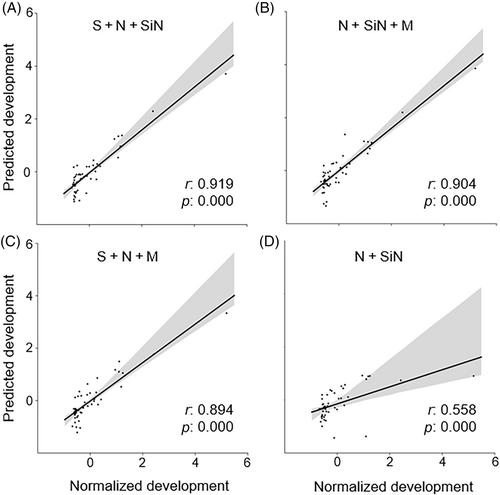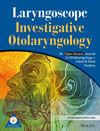Individualized post-operative prediction of cochlear implantation outcomes in children with prelingual deafness using functional near-infrared spectroscopy
Abstract
Objective
The goal of this study was to develop an objective measure and predictor of cochlear implantation (CI) outcomes using functional near-infrared spectroscopy (fNIRS) for young children with prelingual deafness.
Methods
Sound-evoked hemodynamic responses were recorded from auditory and language-related cortical regions of 47 child CI recipients (35.47 ± 17.24 months of age) using fNIRS shortly after CI activation (0.26 ± 0.30 months). There were four sound conditions (natural speech, instrumental music, multi-speaker babble noise, and speech-in-noise). Post-CI auditory and verbal communication performance was evaluated using clinical questionnaires with caretakers. Both classification and individualized regression models were constructed to predict post-CI behavioral improvement from fNIRS data using support vector machine (SVM) learning algorithms.
Results
Auditory cortical responses shortly after CI hearing onset yielded highly accurate prediction of behavioral development in young CI children. For classification models, optimal prediction was achieved using cortical responses to two or more sound conditions, with the highest accuracy of 98.20% (precision = 98.17%, sensitivity = 98.96%, area under the curve of the receiver operating characteristic curve = 99.61%) obtained with the combination of speech, noise, and music stimuli. Similarly, for regression models, best prediction of individual development was achieved using three (highest r = 0.919) or four (r = 0.966) sound conditions. The predictability of cortical responses far outperformed (Cohen's d: 18.56) that of the collection of audiological and demographic parameters (classification accuracy: 0.62) under the same SVM algorithms and could not benefit from the inclusion of the latter.
Conclusion
Machine learning models using auditory cortical hemodynamic responses shortly after CI activation were able to predict individualized post-CI behavioral improvement in children with prelingual deafness.
Level of Evidence
Level 5.


 求助内容:
求助内容: 应助结果提醒方式:
应助结果提醒方式:


